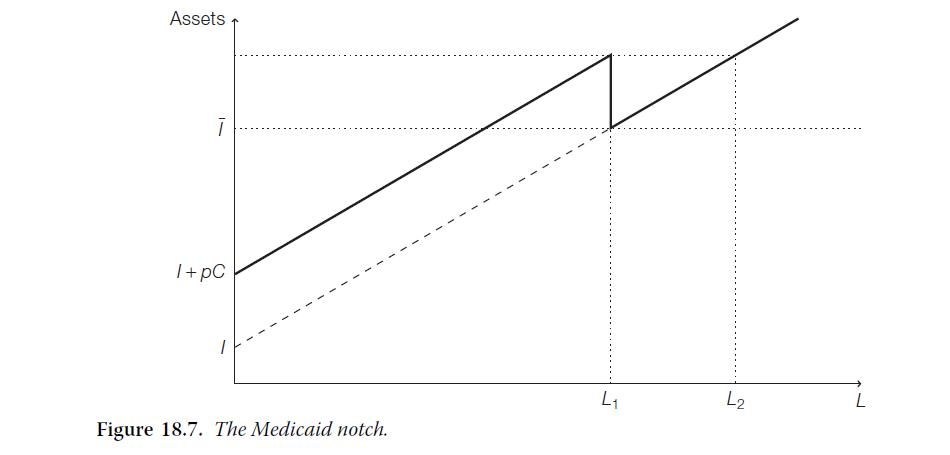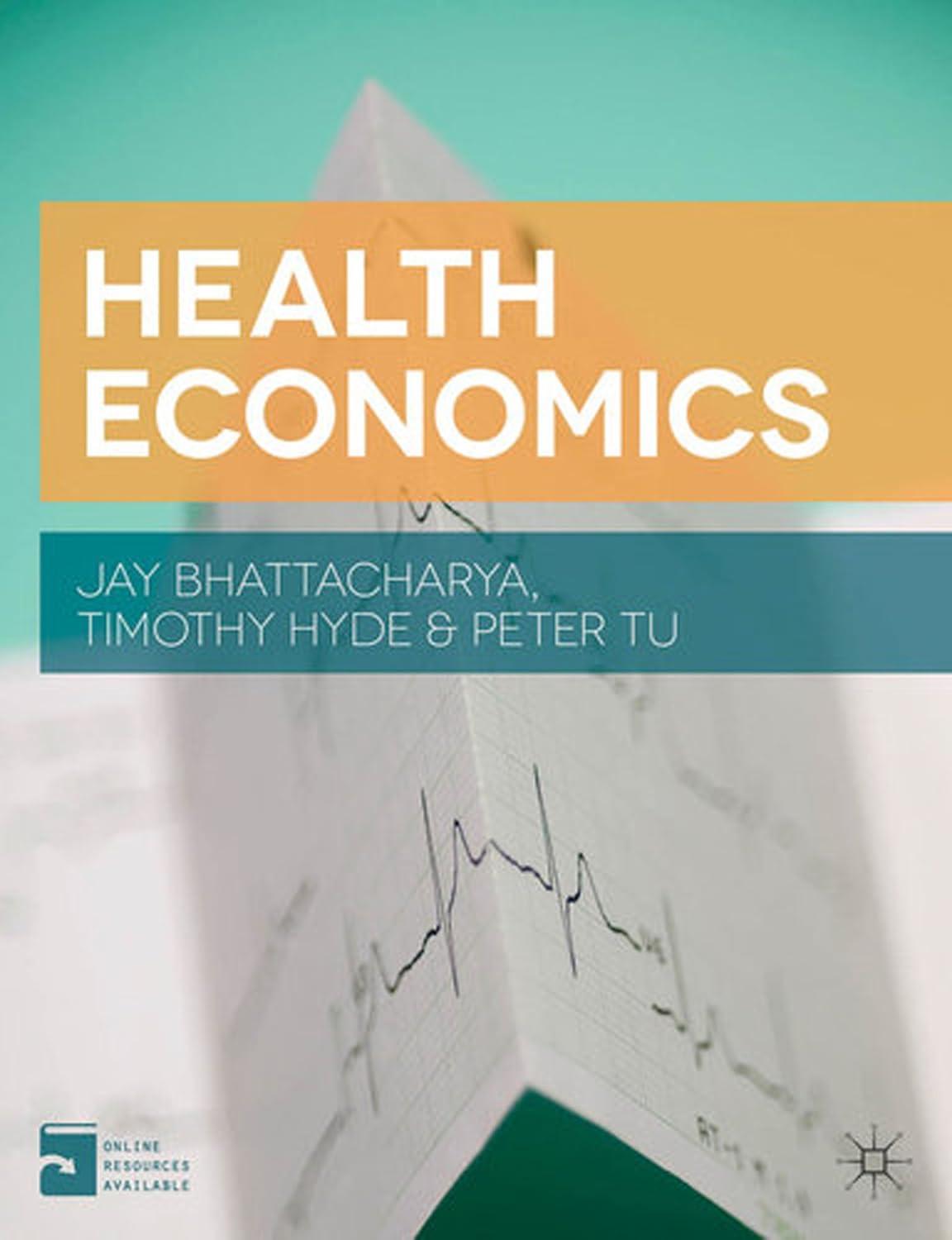Consider Figure 18.7, which depicts the labor market disincentive effects of Medicaid. In the figure: L
Question:
Consider Figure 18.7, which depicts the labor market disincentive effects of Medicaid. In the figure:
• L is the number of hours worked per year.
• ¯I is the income threshold for Medicaid eligibility. If a worker earns less than ¯I, he is eligible for C free units of health care, which cost p per unit on the open market.
• The solid line indicates the total compensation (wage plus Medicaid benefits) that a worker earns as a function of L, hours worked.
• The slope of the solid line reflects the hourly wage.
a. The interval from L1 to L2 is called the Medicaid notch or, less colorfully, the Medicaid work disincentive region. Explain why an individual does not elect to work between L1 and L2 hours.
b. In this model, the value of Medicaid to the worker is set to the price of health care times the quantity of health care transferred (pC). Is pC more than, less than, or equal to the value of Medicaid for most workers?
c. If the true value of Medicaid were used in the figure instead of the equivalent monetary value, would this shrink or expand the work disincentive region between L1 and L2?
d. In this model, workers earn the same total assets whether they work L1 or L2 hours.
Is the worker better off at L1 or L2 hours of work?
e. If disutility from work were included in the model, would this shrink, expand, or keep the same the size of the region where workers have no incentive to work?
f. In your own version of Figure 18.7, draw three sets of plausible utility curves that take assets as a positive input and hours worked as a negative input. Draw one set so that the worker elects to work less than L1 hours, one set so that the worker elects to work exactly L1 hours, and one set so that the worker elects to work more than L2 hours.
g. Explain why the utility curves cannot be drawn so as to induce the worker to work between L1 and L2 hours.
h. Yelowitz (1995) studies a Medicaid reform measure that reduced the Medicaid work disincentive. One of the reforms he studied raised the Medicaid eligibility threshold income level by 33%. Draw a new version of the figure with a new labor–income curve that reflects this change. Explain how this change might induce someone currently working L1 hours per year to work more, and be sure to draw indifference curves to support your answer.
Step by Step Answer:






